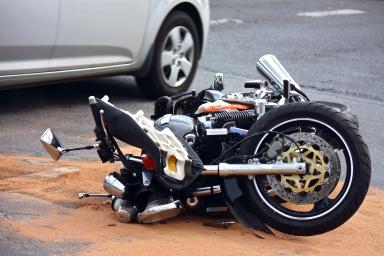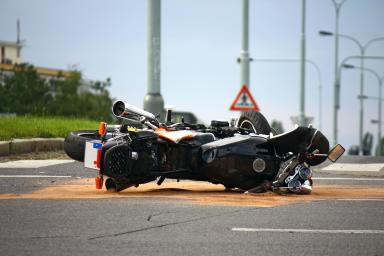North Carolina Motorcycle Laws

According to the latest published report from the North Carolina Department of Transportation and the DMV, 3,712 motorcycle crashes occurred throughout the state in 2021. Of these accidents, 2,847 resulted in injuries, and 210 were fatal crashes that killed 202 motorcyclists. Compared to 2020, North Carolina saw a 6% and 14.8% increase in motorcycle accident-related injuries and deaths, respectively. In the state’s total motor vehicle crashes for 2021, the main cause was the driver’s failure to reduce their speed. Other common factors include driver inattention, reckless driving, improper lane changes, alcohol intoxication, and failure to yield the right-of-way.
To ensure the safety of motorists and pedestrians alike and prevent more accidents from occurring on its roads and highways, North Carolina has a number of traffic ordinances and regulations in place. These are imposed to maintain the flow of traffic and encourage motorists to operate their vehicles in a safe manner. If an accident does happen, the state also has laws on insurance requirements, legal deadlines, and contributory negligence to help victims prepare their arguments and evidence as they file lawsuits or compensation claims.
North Carolina Motorcycle Helmet and Equipment Requirements
All motorcycle riders and passengers in North Carolina are required to wear a helmet, regardless of their age. A helmet must fall within federal motor vehicle safety standards with an inner liner that is around one inch thick and made of polystyrene foam. It must also have its manufacturer’s label inside the helmet and a permanent DOT symbol on the back. Those who fail to wear a helmet will be fined $25.50 along with additional costs, though they will not receive demerit points.
In addition to wearing helmets, North Carolina motorcyclists must ensure that their motorcycles are fitted with the proper parts and equipment as required by state law. These include:
One to two headlamps that illuminate objects and people at a distance of 200 feet.
A rear lamp that projects a red light that is visible from a distance of at least 500 feet.
A lamp that illuminates the motorcycle’s number plate, making it readable from a distance of 50 feet.
A muffler or exhaust system that reduces noise and smoke.
A horn that is audible from a distance of at least 200 feet.
A brake that can be operated either by hand or by foot.
A registration plate that is maintained and displayed in a horizontal upright position.
North Carolina Police Pursuit Policy
Following a policy change in 2017, troopers from the North Carolina Highway Patrol can no longer pursue suspects fleeing in vehicles or use the PIT maneuver to force a fleeing vehicle to stop if it is driving above 55 mph. This is to reduce the safety hazards that police chases pose to other motorists and pedestrians. However, officers may still pursue a fleeing high-risk suspect who has committed or is believed to have committed a felony.
Additionally, the Highway Patrol classifies suspected offenders based on the threat that they pose to other people on the road. Those with only technical violations are considered non-hazardous, while those who commit a traffic violation but continue to drive properly are deemed medium-risk suspects. Motorists who drive at high speeds or while intoxicated, operate their vehicles aggressively or recklessly, or commit violent felonies are considered high-risk suspects.
Law enforcement personnel are exempt from any speed limits when pursuing a suspect. However, they are still required to drive with care to ensure that no other motorist or pedestrian is put in danger throughout a pursuit. They must also determine whether a pursuit’s continuation is still feasible. For example, the Apex Police Department requires its officers to take factors such as road, weather, and traffic conditions into consideration when continuing a pursuit. Under the department’s policy, a pursuit shall be terminated if it begins posing unacceptable risks of harm to other people.
North Carolina Motorcycle Operation and Right-of-Way Regulations
There are specific regulations throughout North Carolina that all motorcycle operators must follow when traveling on the state’s roadways. This is to help riders and passengers alike navigate roads safely and to preserve the safety of other motorists and pedestrians. These regulations include the following:
A motorcycle may not carry any number of passengers that exceeds the number that it was originally designed to carry.
All motorcycles are entitled to occupy and navigate a full lane, and any other vehicle may not be driven in a manner that takes up a motorcycle’s space; this does not count in instances where two motorcycles share a single lane abreast.
While lane splitting is not deemed illegal, a motorcycle may not pass any vehicle on the right.
In addition to these regulations, motorcyclists in North Carolina must follow the state’s laws involving the right-of-way, which are as follows.
A driver turning left within an intersection or into a private road, alleyway, or driveway must yield to any vehicles approaching from the opposite direction.
When two drivers simultaneously approach or enter an intersection, the driver on the left must yield to the driver on the right.
A driver about to enter a traffic circle must yield to all other vehicles already within the circle.
A driver must yield to any pedestrians crossing a highway within residential or business districts through a visibly marked crosswalk or pedestrian crossing unless there are officers or devices regulating the flow of traffic within the area.
North Carolina Speed Limits
The NCDOT imposes different speed limits on roadways and highways throughout the state to ensure the safe flow of traffic and reduce the likelihood of high-speed crashes. When determining speed limits, the department considers the following factors:
A road’s crash history
Speed data
Visibility conditions
Driveway densities within a corridor
Any development along the road
Unless posted or specified otherwise, North Carolina’s speed limits are:
35 mph within residential areas, business districts, and incorporated municipalities
45 mph for school buses
55 mph for activity buses, within rural areas, and on undivided roads
60 mph on divided roads
65 mph on urban freeways
70 mph on rural freeways
In addition to these statutory speed limits, motorists in North Carolina must reduce their speed depending on present and anticipated driving conditions to minimize the risk of causing an accident. This applies if inclement weather is present, if it is nighttime, or if there are work zones. Any speeding violation in North Carolina can result in fines ranging from $10 to $50, depending on how much a driver exceeded any given speed limit, along with any court costs. Those who violate speed limits in work zones may be fined as much as $250. Speeding violations that result in reckless driving charges and fatal accidents also include imprisonment lasting between 30 days and 160 months.
North Carolina DWI Law
North Carolina imposes a DWI law prohibiting motorists from operating a vehicle if impaired or under the influence of alcohol and/or drugs. The state considers a driver to be under the influence of the substance they ingested has caused a noticeable impairment in their ability to drive.
In terms of alcohol intoxication, drivers are considered intoxicated if they have a blood alcohol concentration level of 0.08% or higher. Minors are charged with a DWI infraction if they try to operate a vehicle with any amount of alcohol in their system.
Those charged with DWI will pay fines and serve a jail term based on the severity of their offense. A judge may impose a harsher penalty if there are aggravating factors, which can include:
Driving with a license revoked because of a previous DWI incident
Driving with a minor passenger when the offense occurred
Having a prior DWI conviction within the last seven years
Driving with a BAC of 0.15% or greater
Driving at least 30 mph above any speed limit
Causing a collision while impaired
Depending on the severity of a DWI offense based on the aggravating factors present, a drunk driver may pay a minimum fine of $200 and a maximum of $4,000. Potential penalties include a minimum jail sentence of 24 to 72 hours or imprisonment lasting one to two years. Underage DWI offenders are penalized with a fine of $1,000 and 30 days of community punishment, which may include mandatory substance abuse treatment and community service. Subsequent offenses can result in electronic house arrest, special probation, or imprisonment.
North Carolina Motorcycle Insurance Requirements
North Carolina’s motor vehicle laws require all motorcycle owners to purchase liability coverage, which covers the losses of others in terms of medical expenses and damaged property if the insurance owner causes an accident. Once a rider has obtained liability coverage, they must keep their proof of insurance with them at all times.
The minimum liability coverage amounts in North Carolina are:
$30,000 for bodily injury per person
$60,000 for bodily injury per accident
$25,000 for property damage
In addition to liability coverage, motorcyclists are required by law to obtain uninsured motorist coverage, which has the same minimum requirements for bodily injury and property damage as liability coverage. Uninsured motorist coverage is used to pay for any losses if the offending driver in an accident has no insurance. Motorists also have the option to get underinsured motorist coverage to pay for losses in the event that an offending driver has insufficient insurance coverage.
Those who do not have the required liability coverage, have canceled their insurance without notifying the state’s DMV, or have failed to present proof of insurance will be fined between $50 and $150 and may be imprisoned or put on probation for up to 45 days. Offenders have a maximum of 10 days to purchase insurance coverage or provide proof of insurance to the DMV. Those who fail to do so within the given deadline will have their vehicle registration suspended and their license plates confiscated for 30 days.
North Carolina Is an At-Fault State for Insurance Claims
Under North Carolina’s at-fault guidelines, state motorists who cause accidents are the ones who will pay for the damages of any victims using their insurance coverage. Accident victims can also file lawsuits against at-fault drivers to recover their losses in terms of medical costs, lost income, and damaged property.
Additionally, victims can file a claim with their own insurance provider using applicable policies, such as collision coverage, to offset their losses, if any. Once the company has paid for the victim’s damages, it will file a subrogation claim against the at-fault driver’s insurer to recoup its payments.
When proving a driver’s fault, victims can use the following:
Visual evidence, including videos and photos
Eyewitness statements
Police reports
Medical records detailing the victim’s injuries
How Much Can Someone Sue for a Motorcycle Accident in North Carolina?
North Carolina law does not limit the total compensatory damages that motorcycle accident victims can recover, allowing plaintiffs to recover maximum compensation for their losses. Compensatory damages include both economic and non-economic damages, which have tangible and intangible costs, respectively.
Economic damages often include:
Present and future medical expenses
Lost income or loss of earning capacity
Repair and replacement costs for damaged property
Vocational rehabilitation
Household services for chores that the victim cannot do due to injury
Non-economic damages may refer to:
Pain and suffering
Emotional trauma or stress
Loss of companionship
Loss of enjoyment of life
If the court finds that the liable party in a motorcycle accident case acted with malicious or willful intent in causing injury to the victim, punitive damages may be awarded as a result. As such, the plaintiff’s punitive damage award cannot exceed $250,000 or three times the amount of their award in compensatory damages, whichever is greater. However, there is no statutory limit on punitive damages if the accident involves drunk driving.
North Carolina Is a Pure Contributory Negligence State for Motorcycle Accident Lawsuits
North Carolina courts adhere to the principle of pure comparative negligence for personal injury lawsuits. This means that motorcycle accident victims who are found to be partially liable for the crash or collision will be barred from recovering any damages, even if the at-fault driver is considered 99% at fault.
A plaintiff can prove an at-fault party’s liability in an accident by establishing that:
The defendant owed the plaintiff a duty of reasonable care (by driving safely).
The defendant breached that duty (by committing a moving violation).
The defendant’s breach of duty directly caused the plaintiff’s injury.
The defendant should have known that their action or inaction would cause harm.
The plaintiff suffered losses due to the injury.
When using the defense of pure contributory negligence, the defendant in an accident case has the burden of proof showing whether the plaintiff contributed to the accident. To defend against this, the plaintiff can use the following legal doctrines:
The proximate cause doctrine - The plaintiff can argue that his or her injury was the foreseeable result of the defendant’s action or inaction.
Gross negligence - Evidence must show that the defendant acted with “wanton” or “willful” conduct or deliberate intention to cause harm to the plaintiff.
The last clear chance doctrine - The plaintiff can argue that the defendant could have acted with reasonable care at any moment up until the occurrence of the plaintiff’s injury to avoid the accident in spite of the plaintiff’s contributory fault.
North Carolina Statute of Limitations for Motorcycle Accidents
The statute of limitations for personal injury cases in North Carolina is three years. Motorcycle accident victims must take legal action against liable parties within the given time frame or risk having their lawsuit or claim dismissed by the court. The statute begins counting down from the date of the accident in question. If the accident results in wrongful death, the deceased victim’s dependents have two years to file a claim or lawsuit, starting from the victim’s date of death.
However, the discovery rule may apply in certain scenarios, such as when a victim is not made aware of an injury or property damage until later. The statute of limitations for these scenarios will begin on the date that the victim discovers the injury or damage, or the date when they should have reasonably become aware of it.
North Carolina’s statute of limitations also begins differently for cases where the person entitled to take legal action is mentally incompetent, disabled, or under the age of 18. As such, the statute starts when the person in question recovers from their mental incapacity or disability or when they turn 18. In these cases, the statute’s duration is still three years.
Legal Resources for North Carolina Motorcycle Accident Victims
North Carolina Bar Association
The North Carolina Bar Association’s website is open to state residents who seek legal assistance. The website has a Lawyer Referral Service that people can use to consult with an attorney about their respective concerns and cases for 30 minutes after paying a $50 referral fee. Potential plaintiffs can pay additional fees for longer consultations or discuss the possibility of ongoing representation with matched attorneys. Additionally, the NCBA allows website visitors to post legal inquiries on the NC Free Legal Answers service, where lawyers can respond to questions based on their respective practice areas.
North Carolina Division of Motor Vehicles - Crash Report Request
State residents can visit the North Carolina DMV website for information on how to request specific crash reports. Those who wish to submit requests can download and complete the Crash Report Request (TR-67A) Form from the website before submitting it with their payment of $5.50 in person at the Vehicle Registration Section at the Raleigh Central Services/License Plate Agency at 4121 New Bern Avenue. Alternatively, they can submit their request and payment via mail to the address indicated on the TR-67A Form. A receipt for a request ordered by mail will be processed within 10 working days.
North Carolina Department of Insurance - Insurance Complaints
The North Carolina Department of Insurance provides people with basic information on how to report potential instances of insurance fraud. Reports can be made via telephone at +919-807-6840 or +888-680-7684 (within the state only). Alternatively, people can submit reports by mail to the department’s Criminal Investigations Division at 1201 Mail Service Center in Raleigh or via fax at 919-715-1156. In addition, they can file an insurance-related complaint or forward any concerns to the department’s personnel online or by submitting a Consumer Request Assistance Form.
Expertise.com StaffAuthor
Step into the world of Expertise.com, your go-to hub for credible insights. We don't take accuracy lightly around here. Our squad of expert reviewers, each a maestro in their field, has given the green light to every single article you'll find. From rigorous fact-checking to meticulous evaluations of service providers, we've got it all covered. So feel free to dive in and explore. The information you'll uncover has been stamped with the seal of approval by our top-notch experts.


![¿Cuál es la indemnización promedio de las demandas por accidentes de moto? [2023]](https://images.ctfassets.net/k00sbju4hbzq/590XSDSoqNVs6XSMNY5s3G/a969ee3bedaaf9016cec601fc30f495b/average_motorcycle_accident_settlement.jpg?fit=fill&w=384&q=75)

